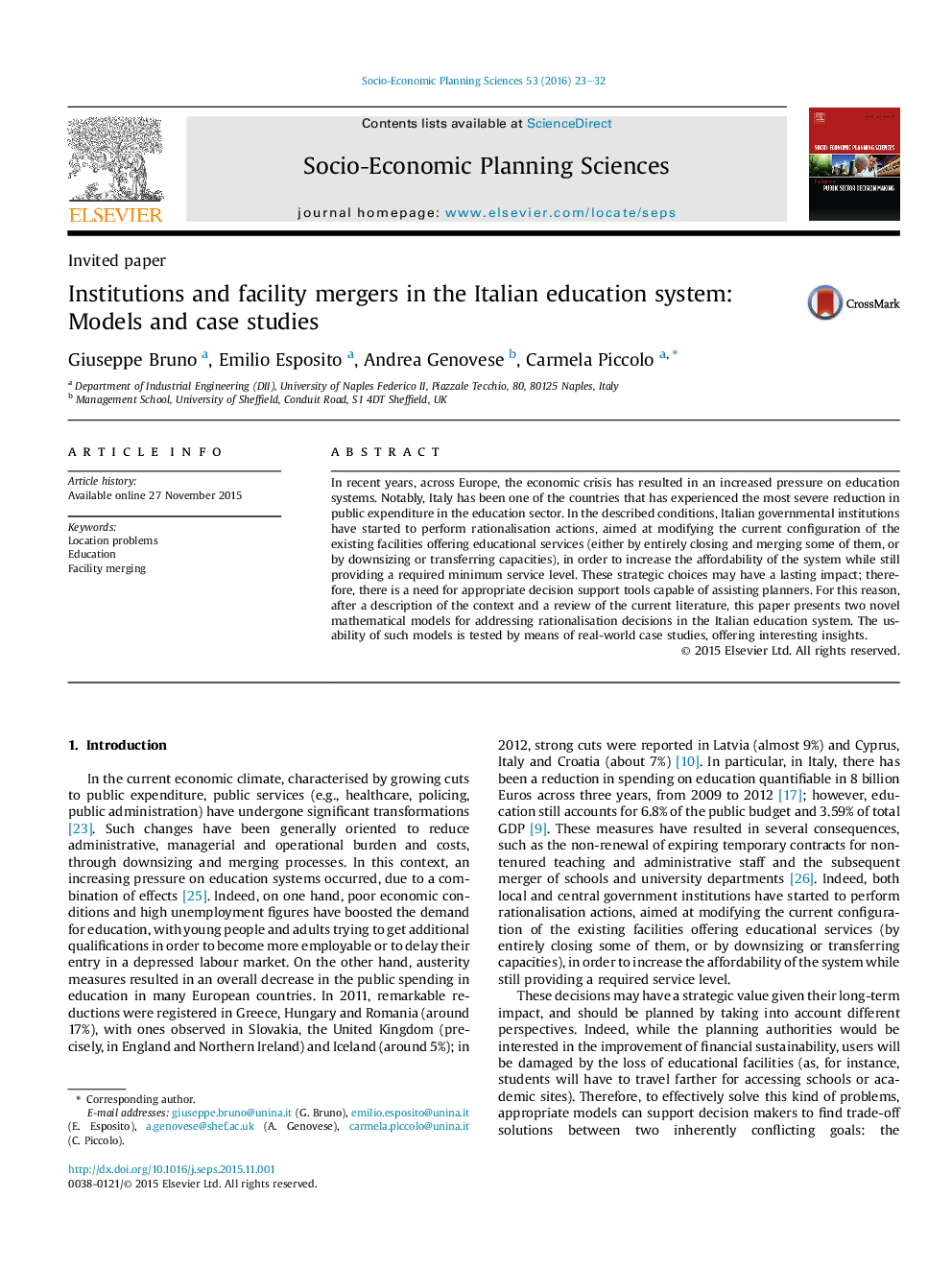| کد مقاله | کد نشریه | سال انتشار | مقاله انگلیسی | نسخه تمام متن |
|---|---|---|---|---|
| 986771 | 1481009 | 2016 | 10 صفحه PDF | دانلود رایگان |
In recent years, across Europe, the economic crisis has resulted in an increased pressure on education systems. Notably, Italy has been one of the countries that has experienced the most severe reduction in public expenditure in the education sector. In the described conditions, Italian governmental institutions have started to perform rationalisation actions, aimed at modifying the current configuration of the existing facilities offering educational services (either by entirely closing and merging some of them, or by downsizing or transferring capacities), in order to increase the affordability of the system while still providing a required minimum service level. These strategic choices may have a lasting impact; therefore, there is a need for appropriate decision support tools capable of assisting planners. For this reason, after a description of the context and a review of the current literature, this paper presents two novel mathematical models for addressing rationalisation decisions in the Italian education system. The usability of such models is tested by means of real-world case studies, offering interesting insights.
Journal: Socio-Economic Planning Sciences - Volume 53, March 2016, Pages 23–32
